- Home
- Equipment Reviews
-
Amplification Digital Integrated Mono Block Preamplifier Phono Solid State Tube Analog Sources Cartridges Tape Tone Arms Turn Tables Digital Sources Digital Disc Players DACs Music Servers Streaming Music Services
-
Accessories Power Conditioners Room Accoustics Racks & Stands Audio Software Other iPod iPod Speakers iPod Headphones iPod Transports Headphones Over Ear On Ear In Ear Headphone Amplifier
-
- Audio News
- Event Reports
- California Audio Show, San Francisco
- Consumer Electronics Show
- T.H.E. Show
- Rocky Mountain Audio Fest
- AXPONA
- Salon Son & Image
- Hi-Fi Show & AV Expo
- High End
- Lone Star Audio Fest
- Capital Audio Fest
- TAVES - Toronto Audio Video Entertainment Show
- AK Fest
- Home Entertainment Show
- New York Audio $ AV Show
- Open House Events
- Spotlight
- Music
- The Columns
- 2024 California Audio Show
Making Conscious Dreaming possible: the Audio Note M9 RIAA Signature
By: Audio Note UK | August 2018
Latest Reviews & Audio News
-

PS Audio AirLens and DirectStream DAC Mk2 Review
(July 26, 2024) -

Audio Note UK Meishu Tonmeister 300B integrated amplifier, P3 Tonmeister stereo amplifier, M6 Phono Balanced Preamp Review
(July 12, 2024) -

Douglas Schroeder’s One Year Exploration of Digital Front End Systems
(June 25, 2024) -

Arya Audio Labs RevOpods Anti-Vibration Feet Review
(June 25, 2024) -

Lego Icons Retro Radio Review
(June 14, 2024) -
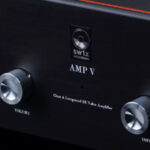
SW1X Audio Design AMP V “Titan” Special directly-heated triode integrated amplifier Review
(June 14, 2024) -
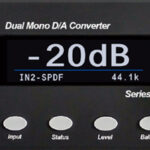
Bricasti Design Model 1 Series II D/A Converter and M5 Network Player Review
(May 24, 2024) -

Star Wars – The Empire Strikes Back – In Concert, May 2, 2024
(May 20, 2024) -
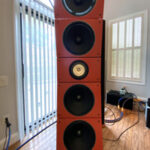
PureAudioProject Quintet15 with Voxativ AC-X field-coil open-baffle loudspeaker system Review
(May 20, 2024) -
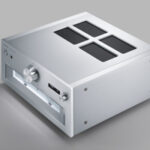
Technics SU-R1000 reference stereo integrated amplifier Review
(May 20, 2024) -
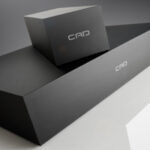
Computer Audio Design GC 1.1 & GC3.1 Ground Control external grounding systems Review
(May 20, 2024) -

Andy Grove of Audio Note UK on IO LTD
(March 23, 2024) -
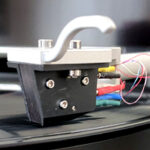
Audio Note UK IO Limited field-coil cartridge system Review
(May 20, 2024) -
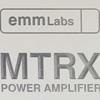
EMM Labs MTRX monoblock Input Board Upgrade Review
(March 7, 2024) -

May 2018 Sibelius Violin Concerto concert video via Berliner Philharmoniker Digital Concert Hall app
(February 16, 2024)
-
Categories
-
Amplification Digital Integrated Mono Block Preamplifier Phono Solid State Tube Analog Sources Cartridges Tape Tone Arms Turn Tables Digital Sources Digital Disc Players DACs Music Servers Streaming Music Services
-
Accessories Power Conditioners Room Accoustics Racks & Stands Audio Software Other iPod iPod Speakers iPod Headphones iPod Transports Headphones Over Ear On Ear In Ear Headphone Amplifier
Site Sections
Copyright ©1996-2024 All Rights Reserved.
Popups Powered By : XYZScripts.com

Publisher’s note: Audio Note UK has graciously provided the following article detailing the conceptualization and design of the company’s M9 RIAA Signature phono stage.
The article is authored by Andy Grove, electronics designer of Audio Note UK.
Read the Audio Note M9 RIAA Signature Review, Part 1
The M9 was intended, from it’s very conception to represent the state of the art in vinyl replay, and, by that, I don’t mean academic performance such as reducing deviation from the RIAA curve to some ridiculously small amount, or cooling the whole thing in liquid helium to achieve a low noise figure.
No, the idea here was to create an instrument which would not only extract as much information as possible from the groove, but also portray that information in the most elegant, beautiful, artistic, musical way possible – even if it does involve liquid helium cooling…
The phono input stage comprises two SQ (Philips, Special Quality) E80F pentodes, one per channel. The E80F is quite electrically similar to the EF86 – designated as a low noise, low microphony valve especially designed for this type of service, except the E80F, some would claim, more successfully achieved those aims.
I chose to use a pentode over the cascode (can be viewed as a pseudo-pentode formed by two stacked triode sections) I would normally use, because I needed to connect the pentode anode direct (well via a coupling cap) into the RIAA network, rather than via a series resistor. I am using the pentode as a transconductance device (which means it outputs a current proportional to the input voltage), and need the extra headroom a pentode provides over a cascode at a given anode voltage.
E80F + direct connection to compensation network = energy
The EQ network itself is a departure from the norm. The norm being a RC network designed more or less according to Stan Lipshitz’s 1979 paper (which, incidentally, contains a mathematical error). There are other varieties, other means of achieving the RIAA compensation curve, such as the impedance matched LCR networks (like Tango EQ-600P), and the LR network by A. Likhnitsky which uses leakage inductance, created by magnetic shunts.
The M9s is different again; it is a symmetrical, high impedance, LCR network, in which the L is the pure leakage inductance between two coils in a specially wound transformer. The pentode (as a transconductance device) senses the input voltage, and drives a current into the network entry port, and, at the exit arrives the frequency compensated version. It’s a little bit like a V/I conversion then a frequency dependent I/V conversion, with amplification.
The L, the leakage inductance results from the imperfect coupling between two coils in a transformer, this is usually a problem as it causes ringing and high frequency rolloff. Here it’s deliberately magnified to cause a big, but controlled HF rolloff (according to RIAA curve).
All real components come with associated ‘parasitic’ components attached to them, for example, a capacitor will have parasitic inductance and resistance. All inductors have similar parasitics which tend to make their performance less than ideal. However, conceptually at least, leakage inductance is perfect – which makes it an ideal candidate for RIAA EQ, especially for the HF part of the curve.
The wire used is of course Audio Note’s own specially drawn and coated silver, and the core material is the absolute best of the best 80% class nickel alloy, specially heat treated for us, even the thickness of the laminations has been carefully arrived at.
After the compensation network is another stage of amplification, which can be a E80CC SQ double triode, or one of several versions of ECC81 or 12AT7 (in RIAA versions) which is an altogether different valve, and, here, chosen for its higher gain. Remember, this is a product which cost as much as a luxury car, and many go to customers with particular requirements, so we often make customisations to them.
In the regular M9 pre there would be a volume control, and another stage of amplification, but, in the RIAA version, there is a single Telefunken 6463 double triode valve for line purposes, which is why we sometimes fit a ECC81 further back in the chain – to give more gain and drive if required.
The 6463 delivers its output via another special Audio Note designed and in-house wound silver wired transformer. In effect, the output stage is a little like a small SE triode power amp.
The output transformer itself has a naturally balanced output formed by passing the secondary through the entire transformer twice, and we provide both balanced and SE connectors. It is possible to make bespoke modifications to the transformer to, for example, to provide another partially isolated winding for a subwoofer. This is of course only relevent to the full pre.
This transformer is (of course) silver wound, by hand, and uses a 55% nickel iron C Core. This material is a unusual and difficult to process, but, can offer properties somewhere between that of the 50% class materials and the 80% class. We worked through many iterations of heat treatment with our foundry partners to arrive at what is a unique, audio specific core material. It’s difficult to use, due to its relatively low saturation flux, but it offers unprecedented transparency and tonal colour.
The signal circuitry just about fills the entire chassis, and we would like to keep a little spare for (on the full pre version) such things as balanced input transformers, so the power supplies are housed in a separate chassis – which of course helps with hum and noise.
These PSUs are based on those used in the M3, M5, M6 and M8 preamps, and the RIAAs and DACs based on those platforms, which are in turn inspired by the Galahad circuitry used in the M10 and M10 Sig.
There is one supply for the phono stage proper and one for line, each with a 6X5 rectifier, a 5651 reference valve and a ECL82 triode power pentode, for the actual voltage stabilisation.
Strictly speaking, I prefer the term stabiliser here, because the purpose is to hold the supply voltage constant, to shield the analogue circuitry from hum and mains fluctuations. This is not done with high feedback and the aim of creating an extremely low output impedance. Instead, there is a feed-forward/feedback bridge, similar to the Galahad, which gives very high ripple rejection, but without gripping the following circuitry like an iron fist.
In audio, there is too much talk of control, like it’s a fear of letting go, the fear of falling asleep because dreaming is the loss of rational thought. But, we have to let go to enjoy music. Composing, playing and listening to music is a kind of conscious dreaming, a flow experience, whatever we care to compare it to.
The M9 is not about control, or parameters, or thinking, it’s about music, whatever that is.